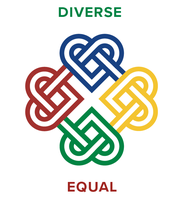In the world of silence – facts and myths
Magdalena Lorek, student of the 2nd year, Master of Nursing, Polish Division
PJM is Polski Język Migowy (Polish Sign Language, PSL) – the language used in Poland by deaf and hearing-deficient people. There are no studies that would give the exact number of deaf people living in our country, but it is estimated that there are about 850,000 people with hearing problems, and 100,000 use PSL .
IS THERE ONE SIGN LANGUAGE IN THE WORLD?
No. For example, deaf Britons use British Sign Language (BSL). Although, not every country has its own sign language, but it is assumed that there are from 200 to 300 of these languages in the world. This is not much if we note that we have about 7.000 spoken languages. Interestingly, there is no universal sign language, although this function is partly performed by the International Sign Language (ISL). It is a communication system based on jointly agreed gestures, which is used, for example, during conferences .
DO WE HAVE TWO SIGN LANGUAGES IN POLAND – PSL (POLISH SIGN LANGUAGE) AND LSS (LANGUAGE-SIGN SYSTEM)?
No. PSL is the language used by deaf people in Poland, while LSS is a language and sign system that was created by hearing people to facilitate communication with deaf people. It is not considered a language and has the same grammar as Polish. However, if you want to communicate with deaf people in an effective and understandable way, I encourage you to learn PSL. Interestingly, PSL grammar differs from the Polish we speak and write. In Polish, we will say, for example: “I went to the store”, and in PSL we will flash the following signs: “I – shop – go – past / was”.
NOT ALL DEAF PEOPLE WILL UNDERSTAND WHAT YOU WRITE THEM ON A SHEET
That’s true. Everything depends on the educational process that the person has been through. In order to be able to function in the surrounding world, a deaf child, apart from learning individual signs, must also be taught their equivalents in written or spoken language. Similarly, most hearing people who use Polish on a daily basis will not understand a text written in French. To deaf people, Polish is often a foreign language.
When you have contact with a deaf person with whom you want to communicate, but you do not know PSL, you can try to convey the message on a piece of paper, but also speak slowly – some deaf people can read from the lips (this depends, among others, on the education process and degree of hearing impairment).
Deaf or deaf?
The deaf are a socially and culturally separate group. They speak a different language than most Poles. They also have their own poetry, art and theater. Therefore, the entry “Deaf” – with a capital letter – refers to deaf people as a linguistic or cultural minority.
-DEAF-MUTE – FORGET ABOUT THIS TERM
It is offensive to deaf people, because even though they do not speak, they have their own language – PSL, in which they convey messages, express emotions and needs. So just say “deaf”..
CODA
Child of deaf adult – a hearing child of deaf parents. Interestingly, over 90% of deaf parents have a hearing child . I have described the information presented on the basis of my own knowledge and experience. I started learning sign language in the first year of my studies, when we were implementing the subject of sign language taught by Joanna Roczyńska, MA. In the second year of studies outside the university walls, I completed the basic level of the PSL course, a year later – the intermediate level, and in June 2022 I passed the final exam of the advanced PSL course (level B1/B2). The ability to learn more about the world of deaf people also helps me write my master’s thesis, in which I examine how the deaf deal with contacts with healthcare professionals.
Much needs to be changed, much needs to be improved, so let’s remember: let’s be sensitive to other people and their needs.
Magdalena Lorek
BIBLIOGRAFIA
1. Kąkol A. Mają swój język i sposób myślenia. Głusi walczą ze stereotypami [Internet]. TVN24. 2022 [cytowane 4 grudzień 2022]. Dostępne na: tiny.pl/wf8m6
2. Krupa P. Międzynarodowy Język Migowy – po co się uczyć? [Internet]. Komisja Europejska. 2021. Dostępne na: epale.ec.europa.eu/pl/blog/miedzynarodowy-jezyk-migowy-po-co-sie-uczyc
3. Nalej S. CODA – czyli słyszące dzieci niesłyszących rodziców [Internet]. Sukcesdziecka.pl. 2019 [cytowane 4 grudzień 2022]. Dostępne na: sukcesdziecka.pl/blog/coda-czyli-slyszace-dzieci-nieslyszacych-rodzicow/
Back
